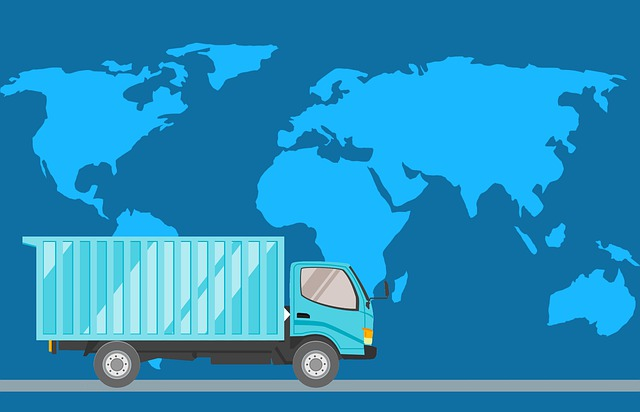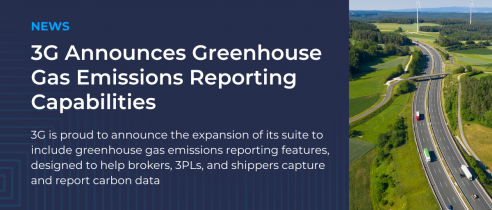Blog
5 Ways TMS Tracking will Help You Get More Business
TMS tracking can help you get more business in a number of ways, including helping you track your marketing efforts, measure your return on investment, and improve your customer service.
TMS tracking is definitely worth considering for any freight shipping or for any freight transportation services provider. But what is it and how does it truly provide an advantage? Let’s find out.
5 Key Takeaways
-
TMS Tracking Enhances Business Efficiency and Customer Service
A Transportation Management System (TMS) improves operational efficiency by automating logistics, optimizing routes, and providing real-time shipment tracking. This leads to better customer service, reduced manual effort, and improved decision-making. -
Real-Time Visibility Drives Supply Chain Optimization
TMS tracking provides real-time updates on shipments, enabling businesses to monitor orders, optimize transportation routes, and minimize delays. It helps companies meet delivery expectations while reducing transportation costs. -
AI and ERP Integration Improve Performance
AI-driven solutions enhance route optimization and predictive tracking, while ERP integration streamlines data flow between financials, inventory, and order processing. This reduces manual data entry, improves billing accuracy, and strengthens decision-making. -
Cost Savings and Increased Productivity
TMS tracking helps businesses lower freight costs through rate management, load forecasting, and shipment optimization. It also increases warehouse productivity by integrating with WMS and ensuring seamless inventory management. -
Competitive Advantage and Scalability
Implementing a TMS allows businesses to scale transportation management across multiple locations, simplify invoicing, and improve customer retention. With enhanced logistics capabilities, companies can stay competitive in an evolving global marke
What is TMS tracking and why is it so important?
A Transportation Management System (TMS) is a technology-based logistics platform that assists firms in planning, executing, and optimizing the incoming and outward movement of goods. It also checks that the package is legal and that the necessary documentation is present. This system is frequently integrated into a bigger supply chain management (SCM) system.
Transportation Management Software or a transportation management solution gives visibility into day-to-day transportation operations as well as trade compliance-related data and documents.
It also provides shipping tracking to ensure that freight and merchandise are delivered on time. A TMS makes it easier for businesses to manage and optimize their transportation operations, be it air cargo, LTL freight or through other freight transportation services.
A TMS primarily serves the need for delivery traceability and transportation optimization (diagrams and assignment of carriers). The total makes it feasible to improve transportation organization. As a result of these enhancements, the transportation budget is reduced.
A TMS is designed particularly for carriers or service providers whose primary business is providing transportation and logistics on behalf of their clients. Functionalities such as fleet management, loading schedules, deliveries, unloading, and invoicing are covered by the TMS for these carriers.
Why it’s important to have a Transportation Management System

In supply chains, transportation management solutions are vital. They have an impact on the entire process, from planning to lifecycle management to procurement and logistics.
A powerful system’s total visibility leads to improved transportation efficiency, which boosts customer satisfaction and, as a result, sales, which leads to business growth.
It is critical to have a system that allows you to negotiate complex trade policy and compliance processes in the dynamic global business world in which we live and trade.
Who uses a TMS?
Transportation management systems are typically utilized by businesses that regularly ship, move, and receive commodities, such as:
-
- manufacturers
-
- distributors
-
- e-commerce companies
-
- retail purveyors
-
- companies that provide logistics services, such as third-party and outsourced logistics companies (3PL and 4PL) and logistics service providers (LSPs).
A transportation management system is used by businesses in practically every area, from construction to life sciences. The primary customers are companies that spend $100 million or more per year on freight shipping, although with the development of cloud-based TMS solutions, small firms can now profit from IT integration as well.
What are the elements that comprise TMS tracking?
The transportation procedure begins with the creation of a transport request that includes the estimate and shipment data. Shippers submit load tenders to carriers, who must then plan capacity and cargo distribution.
Management of orders – All involved parties, from planners to drivers, and customers, have access to order and shipment status information in a TMS. The following are the features that assist users in viewing and managing transportation requests.
Entry of orders – Order entry, whether manual or automatic, entails filling in all necessary details such as commodity or weight, as well as establishing the current location, destination, and delivery date. A system will frequently construct a route, assign transportation and a driver, and determine the estimated time of arrival (ETA). If you have an integrated WMS, this order will be sent to its scheduled conveyance automatically.
Overview of the order – Order planners and drivers can examine their daily workload on a dashboard that displays created orders with their routes and assigned transports. If shipment status information instantly changes, updates will be automatically relayed to the driver.
All documents are also linked to their associated orders, allowing for real time tracking by the driver on a smartphone or tablet. TMS tracking status is updated for all planners in real time. Planners have an overview of all scheduling changes and truck locations as drivers update the status of orders en route.
Tendering
Most TMSs will automatically tender shipments for you – The list of carriers is sorted so that you can always find a provider that meets your requirements or let the system choose one for you. Tendering mechanisms such as broadcast, waterfall, and status tendering are available in most systems. Example of the following tendering strategies:
-
- When it chooses the lowest rate and extends it to other carriers, it is said to be least-cost.
-
- When shipments are automatically assigned to specific carriers, this is known as auto-award.
-
- When employing contractual percentages or load numbers, allocations are made (4 numbers to Carrier A and 3 numbers to Carrier B).
-
- When choosing a carrier that a consumer prefers, etc., it is customer-based.
Rate management for shipments
A rate engine is one of the most significant components of a TMS – Based on regulations such as base rates, discounts, and contract agreements, a rate engine calculates transportation prices for parcel, LTL, truckload, and intermodal shipping. A TMS should be able to generate bespoke pricing rules to meet even the most complex tariffs and give a price to a client as soon as they submit a request.
Load forecasting
You may plan the loading space of trucks, trailers, and containers and get a computation of the available loading space, taking maximum loads and weight into account. For example, master data allows you to enter information about your car measurements and retain it for future reference. The dimensions of the item are taken from the TMS freight order.
Some TMSs provide a 3D load plan capability that allows you to see and adjust how cargo is distributed and how much space is used.
AI-driven tracking solutions
AI-driven solutions in TMS tracking enhance efficiency by automating data analysis, route optimization, and predictive maintenance. Machine learning algorithms can analyze large datasets to identify patterns, predict delivery times, and improve load planning, reducing delays and costs. AI also enhances real-time tracking by offering predictive insights into potential disruptions, such as traffic or weather issues. With automated decision-making, freight brokers can respond faster to changes and improve overall service reliability. AI-driven tracking transforms TMS systems, making them smarter, more responsive, and cost-effective.
Benefits of TMS tracking
Lower freight costs
One of the most significant advantages of a TMS is the reduction of freight costs. Within a TMS, freight costs can be monitored automatically. By using analytics and optimization, this system is able to save money. A transportation management system makes recommendations for cost-cutting and leverages data to deliver useful information.
Real-time delivery tracking
The ability to see where drivers and shipments are in real-time is provided by a TMS. Track and trace functionality is baked into the software allowing users to track the status of their shipments in real-time using a TMS tracking number. This can be particularly helpful when shipments are delayed or lost. The track and trace feature can also be used to locate missing or stolen shipments.
A TMS tracking number provides information on how long a route takes, which can be used to construct a more effective route schedule. This also provides information on the most efficient drivers for these routes. The ability to track TMS delivery and routing is essential.
Provide better customer service
With the capacity to track on-time performance, a TMS online tracker system improves customer service. The ability to track where shipments are and how far they are from their final destination is vital.
The TMS status provides an online gateway through which customers may obtain their shipment delivery status details and notify their customers accordingly. Customers can enter the TMS tracking number provided to them and receive shipment and freight information when they need it, which improves customer service.
Increase warehouse productivity and efficiency
A well-organized warehouse is a vital aspect of the logistics process because of the constant flow of arriving and exiting inventory. When a TMS and a WMS are combined, it is possible to keep track of orders in the warehouse, in transit, and when they arrive. Users will be able to assess procedures and verify that they are efficient as a result of this.
Improvements in overall shipping logistics can be greatly enhanced when systems are tethered to provide more effective data and reporting.
Improve the efficiency of the supply chain
In any company, large or small, productivity is key. This is especially true in today’s fast-paced, global economy. The ability to track drivers, inventory, and other shipping procedures can be a major advantage in terms of productivity.
By tracking these shipping logistics, companies can eliminate waste and enhance the supply chain. This can lead to a significant increase in productivity. In addition, shipping tracking can help to improve customer service and satisfaction.
By knowing where things are at all times, companies can provide their customers with the shipment delivery status details. Tracking can also help to reduce the chances of lost or damaged items.
ERP integration enhancements
TMS tracking can be further enhanced through integration with ERP systems by providing seamless data flow across various business operations. This integration allows freight brokers to connect transportation management with financials, inventory, and order processing, offering a comprehensive view of the entire supply chain. It helps in synchronizing shipments with accounting, automating billing, and improving customer service through real-time updates. By unifying TMS and ERP systems, companies can streamline operations, reduce manual data entry, and gain actionable insights to boost efficiency and decision-making.
Requirements to overcome TMS issues
-
- Companies must prepare themselves to fulfill the needs of seekers, which are unquestionably high.
-
- One must do a thorough self-evaluation of their current methods for managing obligations, which will aid in the identification of problems and the development of appropriate remedies.
-
- The truth regarding changing market needs must be understood and accepted by transportation corporations.
-
- Using a top transportation management system or enterprise TMS to make the process move smoothly and efficiently is always a good idea.
-
- Transport companies of all sizes will benefit from having the best transportation management software.
Implementation and training
Proper TMS tracking and issue avoidance is only possible when implemented and supported by adequate training. Without proper setup, key features like route optimization, load tracking, and automated reporting may be underutilized, leading to inefficiencies. Thorough training ensures that staff understand the system’s full capabilities, reducing user errors and enhancing operational workflows. A well-implemented TMS adapts to specific business needs, maximizing return on investment. Continuous training ensures the team stays updated on new features and best practices, leading to better decision-making and smoother logistics management.
How TMS tracking can provide you a competitive advantage
Your activities will be scaled across all business divisions and departments.
Maintaining a consistent, manual transportation management method gets more difficult as your organization grows. You can be confident that your transportation management will be able to scale up (or down, if necessary) to match the needs of your developing company.
Regardless of whether it’s for a single site or dozens of global hubs, adoption of a centralized, focused strategy will help your business grow successfully.
You’ll be able to successfully manage that growth while retaining and strengthening your firm’s competitive advantage by combining your business units into a suitable transportation platform.
Customer service will be improved.
In a world where everyone expects two-day service for a fixed annual cost. You may provide a high level of customer service to a wide range of clients by taking a strategic approach to transportation management, enhancing supply chain visibility and lowering expenses.
Improve the customer experience with precise, on-time deliveries, and those customers will return with more frequent and/or larger orders before you realize it.
Simplify the charging process.
All businesses strive to be paid on time and in the correct amount, but obtaining that degree of perfection isn’t always simple. Your accounts receivable process becomes a streamlined machine that requires less hands-on intervention when you track your entire transportation process using an automated system.
The amount of time saved on paperwork alone can provide a substantial competitive advantage in the industry, allowing your valuable staff to focus on even more vital activities.
Final Thoughts
As the logistics environment evolves and changes, the demand for effective transportation management is only going to grow. If you’re not currently utilizing it as a strategic tool, you may find yourself facing greater issues in an increasingly global society, where rising expenses and stiffer competition are just over the horizon.
Take immediate action to address these difficulties by bolstering your mobility management plan and utilizing the six benefits highlighted for sustainable and measured growth.
If you’re like most business owners, you’re always looking for ways to make your business more efficient. One way to achieve this is through transportation management software. 3G is a leader in providing TMS software and service solutions. Contact us today to learn how 3G can help your business grow.







